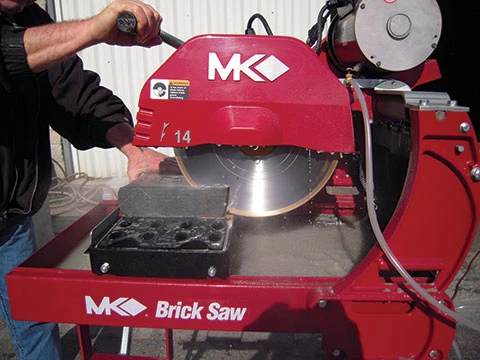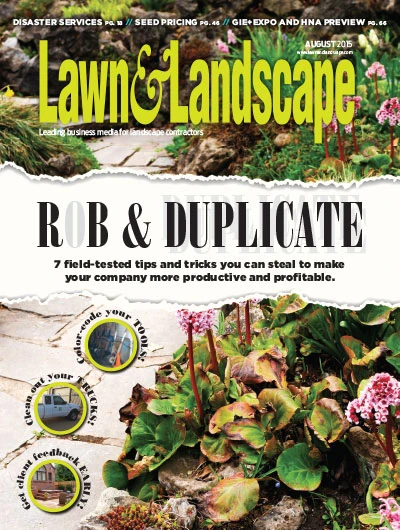
 As the economy improves, more landscapers have the opportunity to expand into hardscaping, taking advantage of the growing popularity of outdoor living to build patios and retaining walls.
As the economy improves, more landscapers have the opportunity to expand into hardscaping, taking advantage of the growing popularity of outdoor living to build patios and retaining walls.
But before you jump into this new line of work, or if you offer it already, it’s important your crews can operate the equipment safely.
“One of the problems that we see out there is these machines are taken for granted,” says Dan Pherson, a product manager with STIHL.
STIHL cut-off machines, of which they have seven models currently available, are not circular saws. “There’s a big difference between something like a circular saw and a cut-off machine, which is what you’re going to use for concrete.”
Instead of a rotating saw blade with teeth, a concrete saw uses an abrasive material, such as commercial diamonds, to grind the material away.
The most common diamond wheel is 14 inches in diameter, and weighs between 3 and 4 pounds. A circular saw is generally 7 and a quarter inches, almost half the size, and should never be used on a cut-off machine.
“The amount of energy stored in a spinning wheel is significantly higher than a circular saw,” Pherson says.
Employee training.
Pherson says it’s important to make sure employees are properly trained before they begin operating one of these machines. “Just because it’s not a huge, 20-ton piece of equipment doesn’t mean that they can avoid training,” he says.
Robert Delahaut, president of MK Diamond Products, says it’s important to look at the operator instruction book that comes with the machines. He also says you should make sure your operators are wearing the proper personal protective equipment prior to starting up the machine.
Joel Guth, president of IQ Powertools, says you should also wear protective breathing gear. “That’s very important because the dust can be very hazardous, even for short periods of time,” he says.
The dust, called slurry, is caused because the saw is grinding away the material, not cutting into it quickly. The silica dust can pose a significant health hazard to anyone in the area. Dust from a paver saw can blow up to 100 feet away and stay airborne for more than an hour, Guth says, so everyone on the site needs to be protected.
Make the cut.
Pherson says contractors should also make sure the material is properly braced and supported before any cutting is done. The material you’ll be cutting is much heavier than wood, which can pose a problem for someone who isn’t properly trained.
“Pavers are so hard, the first mistake that the average person will try is to cut it like cutting a wood 2x4,” says Delahaut. “That is not the way to cut a paving brick.”
When preparing for the cut, the proper way to set it up is to give two support points and then make the cut outside of those points (see diagram at left). If you make your cut in between them, at some point during the cut, the piece will begin to separate and it will create a pinching effect on the wheel.
“It’s really hard work,” Pherson says. “Those materials are really hard, even when you’re using the highest quality diamond wheels. You have to be very careful. You have to use a lot of manual energy.”
Pherson says operators should always cut with water to suppress the dust, and recommends using the standard onboard water connector, which hooks the saw up to a garden hose and keeps the wheel wet as it cuts.
“Water binds up most of the dust and makes it so it can’t enter the atmosphere and be inhaled,” he says. “That’s one of the No. 1 things as an industry that they need to focus on. It seems like the knowledge of cutting with water hasn’t quite reached the level it needs to.”

Explore the August 2015 Issue
Check out more from this issue and find your next story to read.
Latest from Lawn & Landscape
- LandCare adds 2 branches in SoCal, promotes Aleman to branch manager
- Spray them away
- PERC helps debut propane direct-injection fuel system at ACT Expo 2025
- Retargeting Ads – A Secret Weapon for Growing Your Lawn Care Business
- Leading a growing company
- Project EverGreen launches Clean Air Calculator
- Rain Bird acquires smart lawn care company OtO from Toronto
- PBI-Gordon names Marvin as VP of research and development






